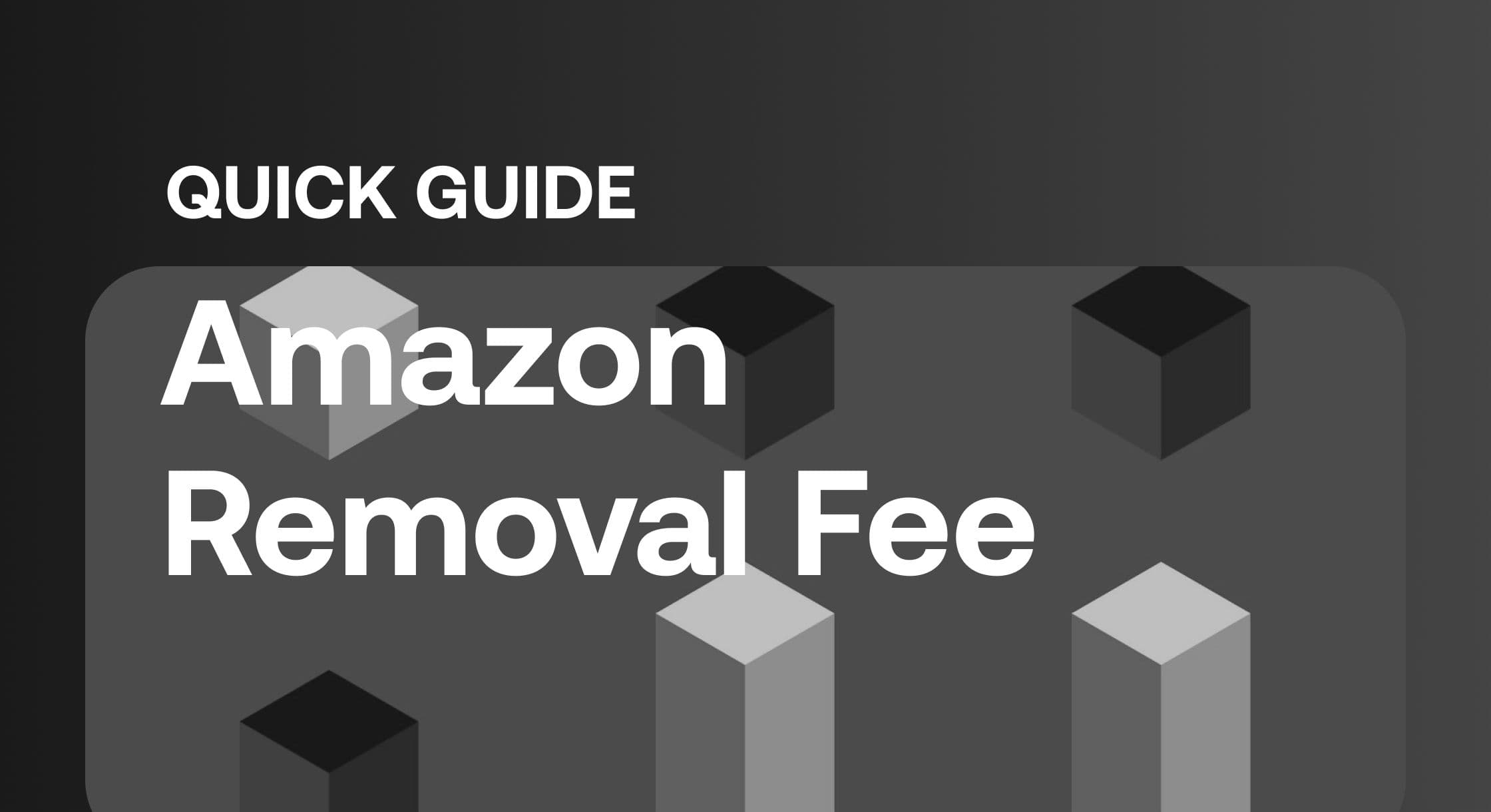/Amazon Removal Fee: A Quick Guide

Amazon Removal Fee: A Quick Guide
Amazon removal fees can be a big worry for new FBA sellers. Understanding these FBA fees is key to managing inventory and costs.
In this guide we’ll go through everything you need to know about Amazon removal fees including what they are, why they’re important, types, how they’re calculated, how to minimize them and how to navigate Amazon’s removal fee policy.
What are Amazon Removal Fees
What are Amazon Removal Fees
These fees are the fulfillment fees charged when you choose to remove your excess inventory or customer returns from Amazon’s warehouses – known as removal orders. Removal orders fees cover the cost of handling, processing and disposal of the returned or unsold products.
When a seller removes their inventory from Amazon’s fulfillment centers they may do so for many reasons. Maybe the products aren’t selling as expected or the seller wants to update their inventory with new products.
Whatever the reason, understanding the process and cost of removing inventory is key to inventory management.
Why are Amazon Removal Fees Important
As an Amazon seller, understanding the importance of removal and long term storage fees is vital to your business’s bottom line. Not managing removal fees properly can lead to extra costs like long term storage fees and impact your overall profitability.
By understanding these fees you can make informed decisions and avoid financial losses.
Plus, checking your inventory regularly can help you avoid extra fees and prevent removal orders. By monitoring your sales and adjusting your inventory accordingly you can avoid removals and the associated costs.
Also, optimizing your product listings and marketing can help increase sales and reduce the chance of having excess inventory to remove.
Amazon Removal Fees
Disposal Fees
Amazon charges disposal fees when you choose to have your unsold or returned products disposed of rather than have items returned back to you. Disposal fees vary by product size and weight. You need to consider these fees when deciding what to do with excess inventory.
When it comes to disposal fees, sellers need to consider the environmental impact of various fees in their decisions. By disposing of products, sellers are contributing to waste generation which can have long term effects on the environment.
So sellers should consider alternative options like donating unsold items to reduce their environmental impact.
Return Fees
Return fees apply when you choose to pay to have your products returned from Amazon’s fulfillment centers. These fees cover the cost of inspecting, repackaging and shipping the returned products back to your designated location.
Note: Return fees include not only the logistics cost but also the labor and resources to process the returned items.
Sellers should include these shipping weight costs when calculating the overall shipping weight of their products especially when dealing with high return rates that can hurt their profit margin.
Liquidation Fees
Liquidation fees apply to sellers who want to get some value back from their unsold inventory. By choosing liquidation, sellers can sell their products in bulk to buyers who buy excess inventory. But liquidation fees will apply as Amazon will sell the products on behalf of the seller.
When considering liquidation as an option, sellers should weigh the returns against the fees.
While liquidation can clear out stagnant inventory and free up storage space, sellers need to make sure the net proceeds from the sale is more than the costs. Sellers should do a cost-benefit analysis before committing to liquidation to make informed decision on their excess stock.
How are Amazon Removal Fees Calculated
Factors that affect the Fee
The Amazon removal fee per unit is also calculated based on product size, weight and category. Plus the fulfillment center location and any storage fees applicable will also affect the overall removal fee per unit calculation.
Also consider the seasonality of your products. During the holiday season and peak seasons like holidays Amazon may adjust removal fees to account for increased demand and storage constraints. Knowing these fluctuations will help you plan and budget for removal fees throughout the year.
Fee Calculation by Product Category
Amazon categorizes products into different categories based on product dimensions, size and weight. Each category has its own removal and storage fee structure. You should know the fee structure of your product category to estimate removal fees in advance.
Also the condition of your products can affect removal and storage fees. Products that are hazardous or require special handling will incur higher removal fees due to additional safety measures and protocols.
Knowing these will help you plan your inventory and minimize unexpected removal costs.
How to Minimize Amazon Removal Fees
Best Practices for Excess Inventory Management
Inventory management, including using removal orders strategically is key to minimizing removal order fees. By monitoring and optimizing your inventory regularly you can avoid excess stock and long term storage fees.
Use demand forecasting and Amazon’s inventory management tool to stay on top of your inventory.
Also do regular inventory audits to get insights on your sales channels, which products are selling and which need to be re-evaluated. By analyzing sales data, inventory age and trends you can make informed decision on restocking and reduce the chance of removal fees due to stagnant inventory.
Seasonal Planning for Inventory
Seasonal planning, like with Q4 planning, is key to prevent excess unsellable inventory and unnecessary removal fees. By forecasting demand during peak seasons you can ensure you have enough stock to fulfill customer orders without the risk of excess unsold inventory.
Also work with your suppliers to adjust order quantities based on seasonal demand fluctuations to maintain optimal for inventory levels.
This proactive approach will remove inventory and not only minimize removals but also customer satisfaction by having product available during peak demand.
Amazon Removal Order Process and Fee Policy
Amazon Policy Updates
Amazon updates its policy including removal fee structure. Sellers should be informed of these policy changes to adjust their inventory management accordingly. Review Amazon seller resources regularly and stay up to date with policy notifications to be ahead of any fee changes.
Stay on top of Amazon’s policy updates to get insights on the reason for fee changes. Knowing the reason will help you anticipate future changes and adjust your business accordingly. By analyzing Amazon’s fee updates you can make informed decisions to optimize your operations and minimize unexpected costs.
Disputing Unfair Removal Fees
Sometimes sellers may encounter removal fees that are incorrectly or unfairly charged in their Seller Central account. When this happens you need to review the fee details, gather evidence and open a dispute with Amazon seller support. Addressing the discrepancy ASAP will help you resolve unfair removal fee charges.
Also make sure to provide the correct ship to address during removal process. If a carrier can’t contact the seller for delivery and the return address used is incorrect the items will be considered abandoned and disposed of without refund.
Communicating openly with Amazon’s seller support team is key to resolving removal fee disputes fast. Provide clear and detailed information to support your case and it will speed up the review process and increase the chance of a positive outcome.
By being professional and proactive during fee disputes you can protect your money and your relationship with the platform.
In summary, understanding and managing Amazon removal fees is key to your selling experience on the platform.
By knowing the definition, importance, types, calculation methods and ways to minimize these fees you can align your inventory management with your financial goals. And stay up to date with Amazon’s removal fee policy and address any disputes ASAP to navigate any challenges that may come your way.


